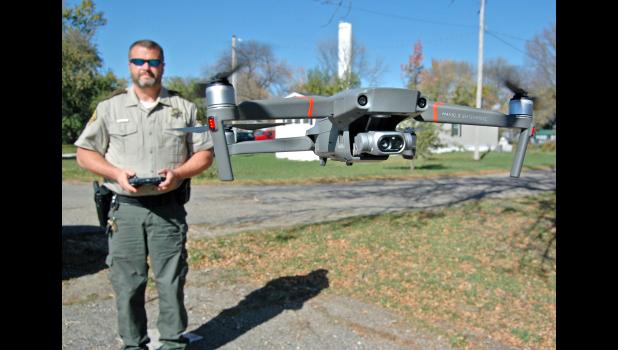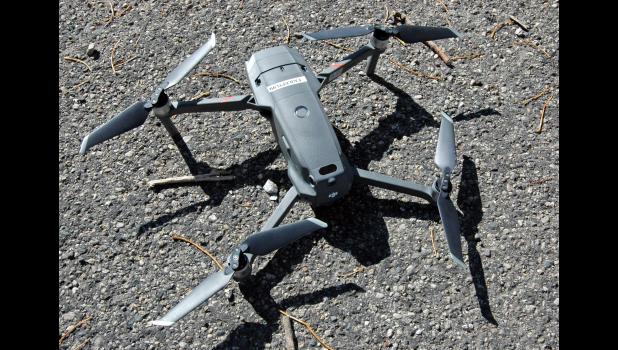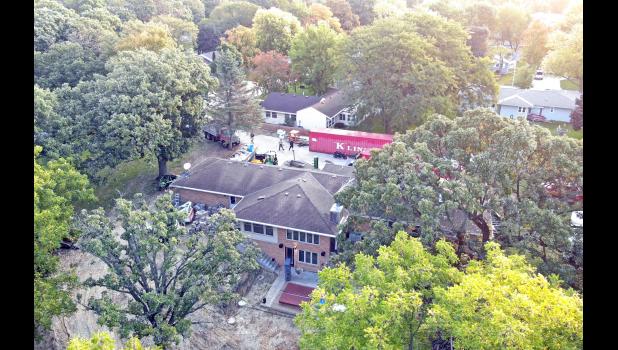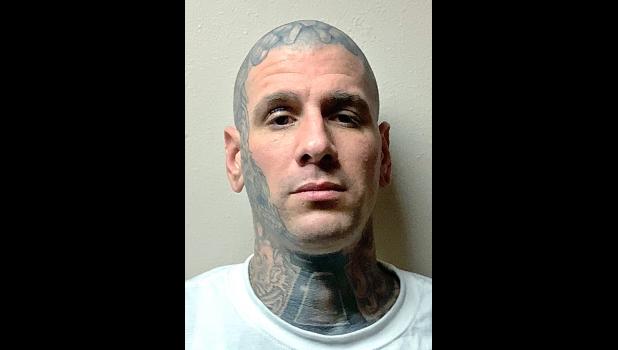RISE OF THE MACHINES
By ANDREW MCGINN
Three times this past summer, Greene County sheriff’s deputies moved in to apprehend a 46-year-old Jefferson man on a warrant for failure to appear — three times he eluded capture by fleeing into an ocean of corn not far from Goose Lake.
Finally, on Sept. 1, the man stepped outside his camper and had no idea he was being watched from high above by the digital, 4K eye of a hovering drone.
From a mile away, Sheriff Jack Williams — newly authorized by the Federal Aviation Administration to conduct drone operations — had piloted the small, gray, Mavic 2 Enterprise into position via remote control.
“You get this one up to a couple hundred feet,” Williams explained, “you can’t even hear it.”
Deputies again moved in. Again, the man ran. This time, however, the drone easily trailed his every step until capture.
Resistance — like they’ll say in the 24th century — was futile.
“With every technology, it’s only going to keep getting better and better,” Jefferson Police Chief Mark Clouse predicted recently. “Smaller, lighter and better.”
It seems so cliche to say that the all-seeing, unmanned quadcopter acquired this year by the sheriff’s office is like something out of science fiction — yet neither Williams nor Clouse could have imagined when each entered law enforcement that this technology would be available to them.
“There’s huge benefits to it,” Williams said. “You can see so much.”
At least twice a year, for example, local first responders are called to the Raccoon River to rescue tubers who are lost or hung up on the water after dark.
“Now we can fly the river instead of walking seven miles of the river,” Williams said. “It cuts the manpower in half for searching.”
With both visible and thermal imagery, night is hardly a match for the Mavic 2, a drone made by the popular Chinese tech company DJI. The four FAA-certified drone pilots at the Greene County Law Enforcement Center — Williams, Chief Deputy Nathaniel Chapman, and deputies Christopher Frehse and Heath Enns — have the option of taking flight with an attachable spotlight or speaker.
The sheriff’s office spent just shy of $7,000, Williams said, between the drone and FAA testing.
But while both agencies at the LEC have already put the drone to use, there’s still much to learn.
“You’ve got $6,000 whizzing around in the air,” Williams said. “I’d say it’s fun to fly, but it’s really not. It’s more nerve-wracking.”
“Sometimes you have to fight with the wildlife for airspace,” he added, describing instances when turkey vultures and barn swallows have buzzed the drone.
The drone can be piloted manually or be programmed to fly a grid pattern, Williams said. With built-in obstacle sensing, it automatically avoids trees.
The drone has a range of five miles, Williams said, and about 45 minutes worth of battery life.
“This one you can hear,” Clouse said, “but if you didn’t know there was a drone in the area, you may not even pay attention.”
September marked the coming out party of sorts for the new drone, with local law enforcement using it multiple times to aid in searches for fugitives — one of whom, 35-year-old Justin Cosnotti, of Jefferson, was considered dangerous.
The drone was launched late last month over a home in the 700 block of West Sunset Road in Jefferson to determine whether it was safe for officers, deputies and state troopers to approach a residence where Cosnotti was believed to be. Clouse said the drone would have enabled them to see whether Cosnotti was outside, and whether he had an object in his hand.
“There’s an officer safety aspect to it,” Clouse said of the drone.
It’s no longer all that easy to surround a house undetected, he explained, noting the growing use of video cameras by residents.
Technology — smaller, lighter, better, cheaper — cuts both ways.
“Just in a matter of seconds, he could be out that basement door and in the timber,” Clouse said. “At least with this, you can tell which direction he’s going.”
Cosnotti ended up outfoxing drones at least twice in September, according to police activity logs. The Carroll County Sheriff’s Office deployed a larger drone of its own one evening over a wooded area to assist, but also came up empty handed.
The Carroll County drone is a formidable piece of technology, capable of zooming in on a license plate at 500 feet, Williams said.
For perspective, the Mahanay Bell Tower stands 168 feet high.
For his part, Cosnotti, who was wanted on a number of warrants, would continue to elude officers until he was apprehended in Polk County at Prairie Meadows on Sept. 25. He was returned to Greene County and booked into jail this week.
Not surprisingly, civil liberty watchdogs are especially wary of drones, with law enforcement from coast to coast embracing the tech since 2016, when the FAA opened the airspace to non-hobby drones, or unmanned aircraft systems (UAS).
“Most agencies are trying to get one,” Clouse said. “They’re a good tool.”
The FAA in 2016 issued its small UAS rule, setting operational limits for civilian drones: drones are to be under 55 pounds and flown at or below 400 feet. Pilots are also required to pass a knowledge test. Williams said he and his deputies are civilly liable for accidents.
The ACLU has warned that, without regulation, drones could lead to “unprecedented invasions of our privacy rights.”
According to manufacturer DJI, Greene County’s drone — the Mavic 2 Enterprise — can be flown in “discreet mode,” in which all LED lights on the craft go dark.
The Brookings Institution in September, in calling this year’s George Floyd protests “the most surveilled protests in American history,” noted the current lack of federal framework governing how police make use of data collected by drones.
The Mavic 2 Enterprise records video in 4K resolution, according to the manufacturer, and has 24GB of onboard data storage.
The majority of police drones are small, Brookings noted, and are largely used to provide “situational awareness” for officers.
But many were alarmed by the use of a military-grade MQ-1B Predator drone on May 29 above Minneapolis to surveil people protesting the killing of Floyd, a Black man, by police.
The unarmed Predator — a $20 million UAS belonging to U.S. Customs and Border Protection based in North Dakota — is reported to have silently watched protestors from an altitude of 20,000 feet with its electro-optical/infrared sensors.
The Minneapolis Star Tribune in June reported that U.S. Customs and Border Protection has been flying Predators to assist law enforcement since 2005.
In combat, the Predator can carry two laser-guided Hellfire missiles.
Williams said there are limits to what law enforcement can do with the emerging technology.
“We can’t fly up and peep in someone’s windows, obviously,” Williams explained, “but the airspace is free for anybody.”
Clouse said Iowa is a one-party state, in that only one party needs to be aware of a recording device.
Still, it could be a while before Williams matches the skill of a military drone pilot tracking al-Qaida.
“Jack’s getting really good at picking out deer and coyotes,” Clouse said.
The heat signatures along the Raccoon River at night are plentiful, as they learned one of the nights tracking Cosnotti with the drone’s thermal imaging.
Williams that night reported to deputies and officers on the ground that he was detecting a heat source directly below the drone.
Rushing to the spot, officers found he was right — it was a skunk.
- Log in to post comments






